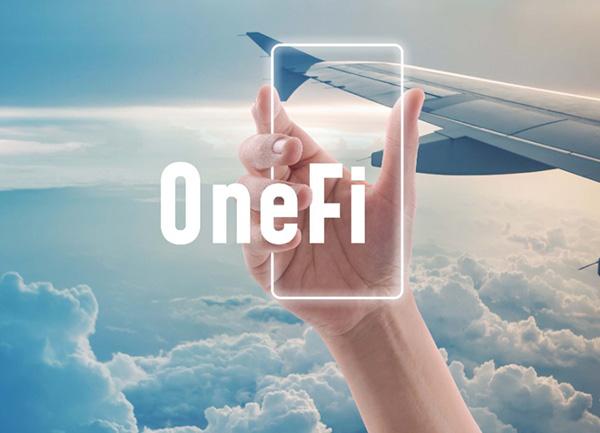
Industry analysts are seeing connectivity usage in the aircraft cabin growing three times faster than passenger growth as post-pandemic consumer behaviors have increased demand for all onboard digital services.
To meet this demand—and help airlines to monetize these services—mobile satellite communications provider Inmarsat on Sept. 21 unveiled a new customer experience platform solution called OneFi.
Inmarsat said OneFi serves as a catalyst to monetize inflight connectivity by “bringing a host of onboard services together within a single portal interface that passengers can easily access using their own personal devices.”
According to Inmarsat, OneFi will enable passengers to order food and beverages, purchase seat upgrades, receive the latest flight and destination information, and sign up for frequent flyer programs, all in real-time, from their seat. In addition, Inmarsat said passengers can browse the internet, stream videos and audio, shop online and enjoy other ecommerce offerings, using high-speed inflight broadband that airlines could choose to offer free of charge, funded through OneFi’s sponsorship and advertising features.
Inmarsat Aviation VP-inflight media Nathan Clapton told ATW that OneFi focuses on two main things: passenger experience and monetization, “because we believe both are vital according to our 2021 Passenger Confidence Tracker, released Sept. 14, which is based on a survey of 10,000 passengers.”
According to the survey, digital technology improves preflight confidence in a number of ways, such as providing up-to-date information and updates to help reassure passengers before a journey. While onboard, the survey found that “digital technology helps to improve confidence by keeping passengers connected and minimizing their contact with others, including cabin crew and fellow passengers. In addition, 41% of respondents believed inflight Wi-Fi had increased in importance after the pandemic, compared to 30% for inflight entertainment. Inflight Wi-Fi was the most important factor for the US (55%) and Canada (41%).”
“Monetization is increasingly important for airlines coming out of lockdown, but also with the ancillary model, or simply just being able to offer greater value,” Clapton said. “OneFi offers three things: a flexible design-led modular portal at the front end; many capabilities to support passenger experience and monetization; and a flexible back-end to work on different architectures and to incorporate multiple different services. And they’re all built in.”
In recent years, airlines have continued to increase their focus on unlocking new revenue streams through broadband-enabled ancillary services. According to Valour Consulting, the market for digital inflight advertising alone is forecast to grow from $266 million today to $3.3 billion by 2030, representing a 10-year compound annual growth rate (CAGR) of 42.9% between 2020 and 2030. Inmarsat called the launch of OneFi “a significant step in turning that untapped commercial opportunity into a reality.”
“What sets OneFi apart is its industry-grade targeting features, media inventory and calls-to-action that are made available to the airline and its partners,” Inmarsat said. “These ensure that content is contextual and relevant to the individual passenger. It also enables partners to engage in more meaningful ways with passengers and boost sales lead generation rates. The platform’s intuitive, user-friendly interface will enable airlines to boost passenger take-up rates and create a frictionless funnel to purchase.”
OneFi uses open architecture and can integrate with any technology infrastructure and Internet Service Providers (ISPs) used by airlines, ensuring a uniform experience across mixed aircraft fleets. Inmarsat said the platform is also scalable, giving airline customers the flexibility to add new third-party services over time and helping to future-proof their onboard offering.
Clapton said Inmarsat is in advanced discussions with a number of airlines about adopting the new platform and hopes to make an announcement on an inaugural customer within the next three to six months.
